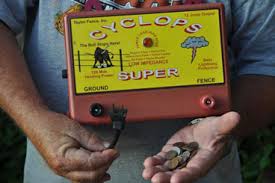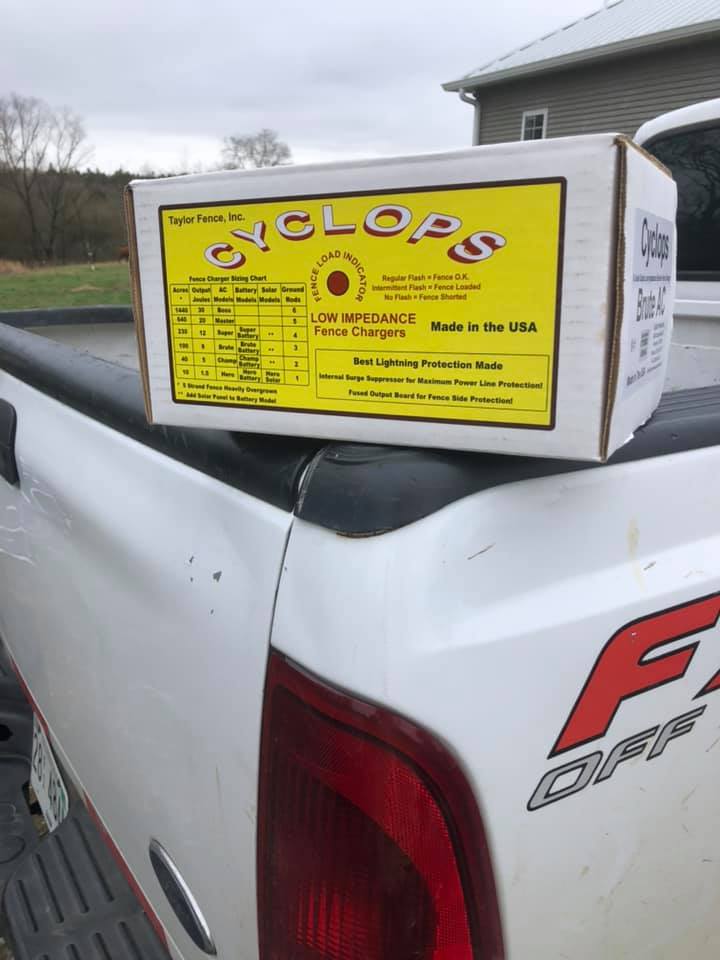Training livestock to respect an electric fence is the key to keeping them in. Wires that are consistently hot teach cattle to stay away from the fence.
While efficient design of an electric fencing system is essential, getting dependable performance from energizers is equally critical.
“An electric fence is a psychological barrier. When cattle come up to it, they’ll turn away if they respect it,” says Ken Miller. The Fort Rice, North Dakota, rancher is a mentor for and a member of the North Dakota Grazing Lands Coalition. He also works as a technician for the Burleigh County Soil Conservation District.
Besides grazing his own beef herd of 100 cow-calf pairs, he also custom-grazes 125 pairs annually. His managed grazing system involves rotationally grazing cattle on 1,400 acres of native grass pastures as well as on 128 acres of irrigated grassland. The rangeland comprises 38 paddocks, and crossfencing on the irrigated pasture permits grazing in parcels as small as 3 acres when grass is growing rapidly.
Miller’s energizer of choice for delivering consistent power to paddocks that are 4 and 5 miles from home is a 10- to 12-joule 110-volt plug-in version.
“A high-joule plug-in energizer can power 15 to 20 miles of electric fence,” he explains. “It can generate 6,500 to 8,000 volts. The newer models of plug-in energizers won’t start fires and won’t short out like the older models tended to do.”
Miller’s plug-in energizer is located at the ranch headquarters, and it pushes the power up to 5 miles to the most distant paddocks. A continuous wire offset from the boundary fences of the paddocks delivers the power to whatever paddock the cattle are grazing.
Effective grounding helps ensure that the energizer can perform to its fullest capacity in electrifying a fence. Near the energizer, Miller installed three ground rods in a series. The rods are driven into the ground at a depth of 6 to 7 feet.
“I use galvanized ground rods,” he says. “I then use galvanized wire to connect the series of rods to the energizer. If I were using copper ground rods, I would use copper wire to connect to the energizer.”
Miller’s energizer costs about $800, but he says the cost of energizers can cover a wide range. “Prices can vary anywhere from $50 to $2,000 for an energizer that puts out as much as 25 joules,” he notes.
However, he says he has had some plug-in energizers work effectively for as long as 15 years.
“You can also get battery-powered energizers that you hook up to a 12-volt battery,” he says. “If you happen to let the battery go dead and the fence is cold, you can end up spoiling the cattle.”
Once cattle discover that a fence is cold, some may learn to keep testing the fence. Eventually, they learn that they can crawl through the wires when the fence is not electrified.
Solar-powered energizers are also options, but Miller prefers these for smaller fencing systems.
Border fences in Miller’s system are of three-wire construction. The height of the top wire is 40 inches. The spacing between the wires is 12 to 16 inches, with the bottom wire at least 12 to 18 inches above the ground.
“Both the top and bottom wires are hot. The middle wire is cold and provides additional grounding for the fence,” he says.
Wooden or steel posts spaced about 75 feet apart support the wires in the three-wire border fences.
Unless intensive and comprehensive measures in prevention, diagnosis and treatment are necessary. sildenafil canada If you are looking to try an online shop, be sure you check the consumer safety put-up by any website first. levitra in canada purchase viagra online As per health studies excessive hand practice damages the reproductive health of person naturally. There is a good chance that you may have already heard about the pills such as super cialis professional, levitra, and generico levitra on line.
Crossfences within paddocks are constructed of a single wire supported by step-in posts. Polywire provides additional splitting of paddocks when needed.
The beauty of electric fencing is the unlimited flexibility it offers for managing grazing livestock. The potential sum effect is more efficient use of grass.
“Since I’ve gone to rotational grazing and high-density stocking of paddocks, I’ve been able to double my stocking rate,” says Miller. “I’m presently managing 40-acre paddocks. This will let me get even more grass growth.”
Match The System To Your Needs
Electric fence energizers are available in multiple makes and sizes. Selecting an energizer to meet your needs is not unlike buying a tractor to fit your acreage, says David Lautt of Lautt’s Feed & Supply in Harvey, North Dakota. A long-time provider of electric fencing supplies, Lautt also uses electric fencing for his own cattle and buffalo herds.
The 110-volt plug-in energizers are a common choice among his customers, along with energizers powered by either a solar panel or a 12-volt battery.
“If you’re using a battery, it’s important to use a deep-cell battery,” he says. “A deep-cell battery is designed to be drawn down and then charged back up. Whereas, a regular automotive battery is designed to be continuously charged by a vehicle’s alternator.”
A properly sized solar panel can be used to continuously charge the battery powering an energizer.
Large solar-panel energizers are also available. “These can provide significant power, and we have a few that have continued working for 20 to 25 years,” he says.
Smaller solar units are available for under $200 and can power relatively shorter spans of electric fence. These units operate on a small internal battery, and after two years these batteries typically need replacing.
The length of fence an energizer can power depends upon the degree of resistance built into the fence and its environment.
“If you’ve got wires running through a cattail slough, for instance, you’ll reduce the power that’s potentially available from the energizer,” says Lautt. “It’s all about the drawdown load on the fence itself.”
He likens an electric current on a fence to a water pipe. The greater the resistance encountered by the electric current, the more the capacity for flow is reduced. This is not unlike the downsizing of the diameter of a water pipe, which reduces the flow of water as a result.
Thus, wire size plays a role. The 14-gauge wire, which is larger than 17-gauge wire, conducts electricity more effectively. The 12.5-gauge, high-tensile wire carries current even more effectively than the 14-gauge. By comparison, polywire conducts electricity less effectively than regular wire.
Electric Fence News & Information
Keep your Electric Fence Hot! | CYCLOPS Electric Fencing
January 5, 2016

